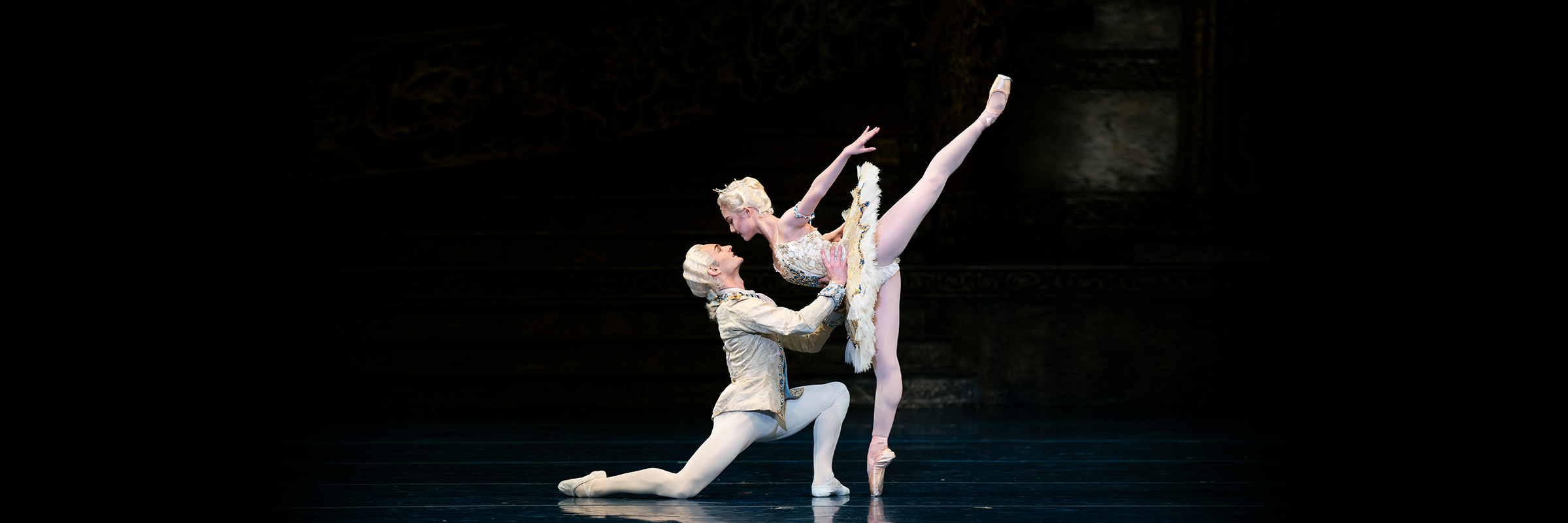Your Ultimate Guide to The Sleeping Beauty
The Epitome of Classical Ballet with a Fairy-tale Ending
What Is It? The first collaboration between the father of classical ballet, Marius Petipa, and famed composer Peter Ilyich Tchaikovsky, The Sleeping Beauty is the pinnacle of classical ballet. Known for its technical challenges, sumptuous sets and costumes, beautiful music, and happy ending, The Sleeping Beauty is everything you would ever want a ballet to be. And SF Ballet Artistic Director and Principal Choreographer Helgi Tomasson puts a new twist on the classic tale by setting it in Russia before and after the reign of Peter the Great.
In Short: The epitome of classical ballet. A fairytale romance. And the ultimate test of a ballerina’s skill.
Who It’s For? Anyone who loves going to the opera or symphony, or reveling in beautiful music, costumes, and dancing.
What Will I See? OK, so you have to know that this isn’t the animated classic Sleeping Beauty (although that version does use parts of Tchaikovsky’s score!). Let’s start at the beginning . . .
PROLOGUE: THE CHRISTENING
The Plot: Once upon a time, in a kingdom far far away, a princess named Aurora is born. Her parents, the Tsar and Tsarina, decide to throw a big party for her christening. They trust their Master of Ceremonies to invite all the important dignitaries, and, for the most part, he does. In particular, he invites a whole cadre of fairies to come celebrate the princess and bring her gifts: the Fairies of Tenderness, Generosity, Serenity, Playfulness, Courage, and, most importantly, the Lilac Fairy. One is left out: the Fairy of Darkness. She’s (rightfully) ticked off and curses the princess, saying that someday the princess will prick her finger on a spindle and die. The Lilac Fairy intercedes, saying that rather than dying, the princess will instead sleep for a hundred years. People are generally satisfied with this idea, but, just to be cautious, the Tsar bans all spindles, needles, and pointy things from the kingdom. Dads.

What Should I Look For? The fairies are the big highlight in the Prologue. Keep an eye out for how their movements relate to the gifts they are bestowing. And this is the first time we’ll meet the two big forces of good and evil: the Lilac Fairy and the Fairy of Darkness. Notice how their movements—the one dancing classically, the other mostly miming—contrast one another.
ACT I: THE BIRTHDAY PARTY
The Plot: The real substance of the story begins in Act I with Aurora’s birthday party, which is really more like a debutante ball. She arrives and dances for her guests and then her father tells her how beautiful she is, and—big news—that she’s now old enough to find a husband. She dances with four suitors in a very famous section of the ballet known as the Rose Adagio. In it, she essentially takes each gentleman for a test run and, spoiler alert, finds each lacking. As the celebration continues, a mysterious guest appears with a present for the princess. Turns out this gift is a spindle and the mysterious woman, the Fairy of Darkness. Aurora, fascinated by this novel object, pricks her finger and collapses. Luckily, the Lilac Fairy wasn’t going to miss her goddaughter’s birthday and does her magic, making Aurora and the whole court fall into an enchanted sleep in lieu of dying.

What Should I Look For? This is the first time we get to see Aurora dance and she does so spectacularly: a few variations—what ballet people call solo dances—and the big event, the Rose Adagio. You want to look for her balances as she moves from suitor to suitor—they should look secure and confident.
ACT II: THE HUNT AND THE AWAKENING
The Plot: In Act II, we finally get to meet our leading man, Prince Desiré. We’ve also fast-forwarded 100 years. Our prince, out on a hunt with friends, has a problem: no wife. Good news though: the Lilac Fairy tells him that she has just the girl for him. The only issue: she’s under a curse. But the Lilac Fairy has a solution: she makes Aurora appear in a vision so she can meet Prince Desiré while still sleeping. Long story short: they dance together, and he proclaims his love for her. Then he goes off into the woods to find her castle, kiss her, wake her up, and thereby end the Fairy of Darkness’ curse.

What Should I Look For? The way the sets and costumes have changed between Acts I and II: we’ve moved forward 100 years in time, so we’ve entered an entirely different era of fashion. Also, about the nymphs in the vision scene: this section is essentially a Romantic ballet and this scene shows off the corps de ballet.
ACT III: THE WEDDING
The Plot: Wait, aren’t we done? Christening, birthday, curse, kiss—that’s it, right? Not so fast. What’s a big classical ballet without a wedding? This final act one big celebration of gorgeous music, costumes, and dancing. We see some guests—the Diamond, Sapphire, Gold, and Silver Fairies; some characters from other fairy tales like Puss in Boots, the White Cat, the Bluebird, and Princess Florine—and we see the couple dance their wedding pas de deux.

What Should I Look For? The wedding pas de deux: coming at the end of a long ballet—especially for the ballerina dancing Aurora—this dance is hard and it’s her job to make it look easy. Notice the way some of the steps from the Rose Adagio return here and look for the “fish dives,” when Aurora seems to “dive” through the prince’s arms and he catches her. These are awe-inspiring and have become the centerpiece of Act III, in spite of the fact that they weren’t added into the ballet until the 1920s.
Header Image: Wona Park and Angelo Greco in Tomasson’s The Sleeping Beauty // © Erik Tomasson








